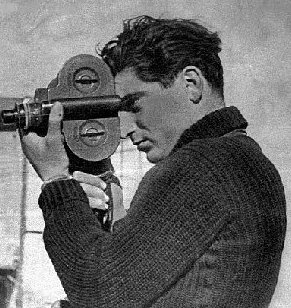| |
Hines, born in 1912, covered a wide range of themes in photographs, from folk customs to folk dances, featuring rich and splendid contents. He visited Beijing along with his photo show and talked with Chinese photographers on his creation experiences and photographic skills. The photo show of Hayon (1874 – 1940) comprised 222 works, which largely reflected the poor lives of the laboring people. His photos on the predicament of child labors directly led to a legislation improving the lives of child labors. After that, a series of photo shows were arranged, which included the Adams photo show, Hiroshi Hamaya photo show, Huang Jiefu photo show, Doisneau photo show (1983), Robert Capa photo show(1984), American Chinese photographer Liu Hongjun’s photo show, Chinese Early-stage Historic Photos (1850—1900) (1984), and Bresson photo show (1987).
Adams (1902 – 1986), a famous photographer in the United States, was good at landscape and portrait photography. About 90 percent of his photos were black and white ones. He presented the great and wonderful appearances of nature and images and characters of persons through the black, white and gray tones. The photos showed rich and delicate layers, and profound artistic styles. His exhibition caused a stir in Beijing and Shanghai, and helped raise the level of China’s black-and-white photography. Doisneau, a famous French photographer, was good at taking photos on social life and people. His works were known for their simple and austere feature. He adopted the method of “fixed point invisible snapshot,” which shot pictures in the instances in the course of development. Therefore, his works had strong flavor of life. His works were also attracted audiences with their humor and entertainment, afforded much food for thought.
Hiroshi Hamaya (1915 -- 1986), a famous Japanese photographer, was remembered for his realistic artistic creation. His works showed robust lines and unrestrained vigor to impress audiences. Hiroshi Hamaya visited China in 1956 for the first time. When he returned home, he presented a photo show China through My Camera, enthusiastically presenting what he saw in China. Huang Jiefu, a Malaysian photographer, largely shot pictures on the lives of the indigenous peoples in Malaysia. He was good at choosing classic moments to stress personalities of the characters.
 Robert Capa
Robert Capa
Robert Capa (1913--1954), a most prestigious war photographer of the 20th century, covered five wars in his brief life. During the Chinese anti-Japanese invasion war period, he shot pictures of the Battle of Tai’erzhuang, and Japan’s bombing of Wuhan, revealing the crimes of Japanese imperialists. Bresson, a world famous photographer, went all over the world in his decades of professional experiences. He shot a lot of precious documentary pictures. His work, The Fateful Moment, had an important impact on the world photographic circle. His photographic exhibition showed 155 works that were the most representative in his 50-year career. The photos of Judge and Coronation is On were masterpieces.
Liu Hongjun, a Chinese photographer living in the United States, exhibited 120 pictures, which he selected from about 1,000 photos he collected that were shot by foreigners in China since late 19th century. The photo show was valuable for studying the Chinese modern history and photographic history. In addition, China hosted a Thailand photographic exhibition, Australian photographic exhibition, Italian photographic exhibition, Philippine photographic exhibition, Singapore photographic exhibition, DPRK photographic exhibition, and the first world professional photographer works show.
As it entered the 1990s, China sponsored growingly more photo shows of foreign photographers. Many of them came from developing countries. In 1990, a Cyprus photographic exhibition was held in Beijing, presenting 82 marvelous works on the styles and features of Cyprus. Other photo shows included the Poland Photographic Exhibition (1990), Marc Riboud, a world famous French photographer, started to visit China for many times since the 1950s. He shot many photos in his visits in the country. For four decades, he kept recording the changes in New China with his cameras, with friendly feelings towards the Chinese people. He was an old friend of the Chinese photographic circle. In October 1996, Marc Riboud held a photographic exhibition in China, in the theme of Forty Years in China, with great success. Each day, several thousand audiences would line up to watch his works.
|
|
